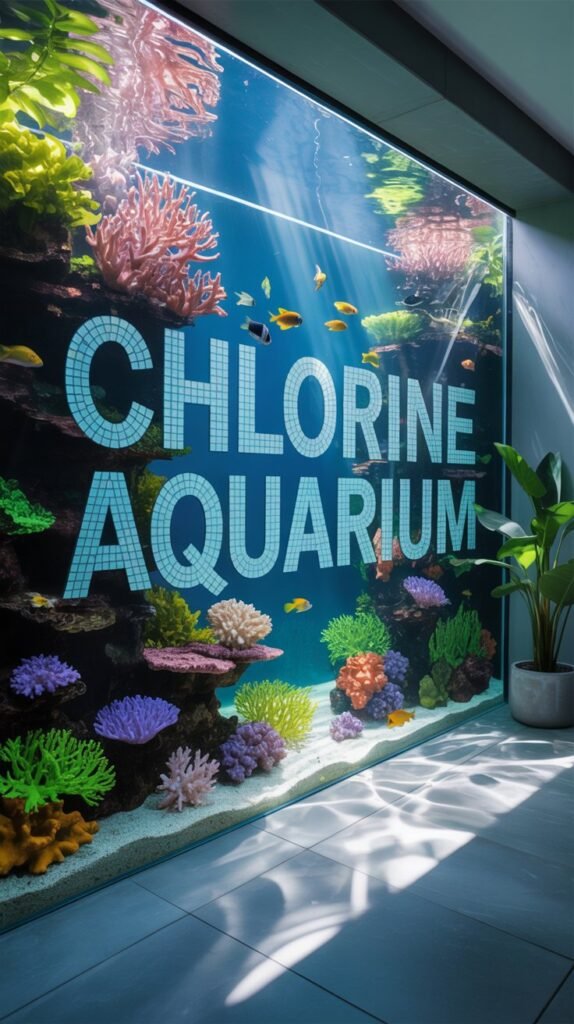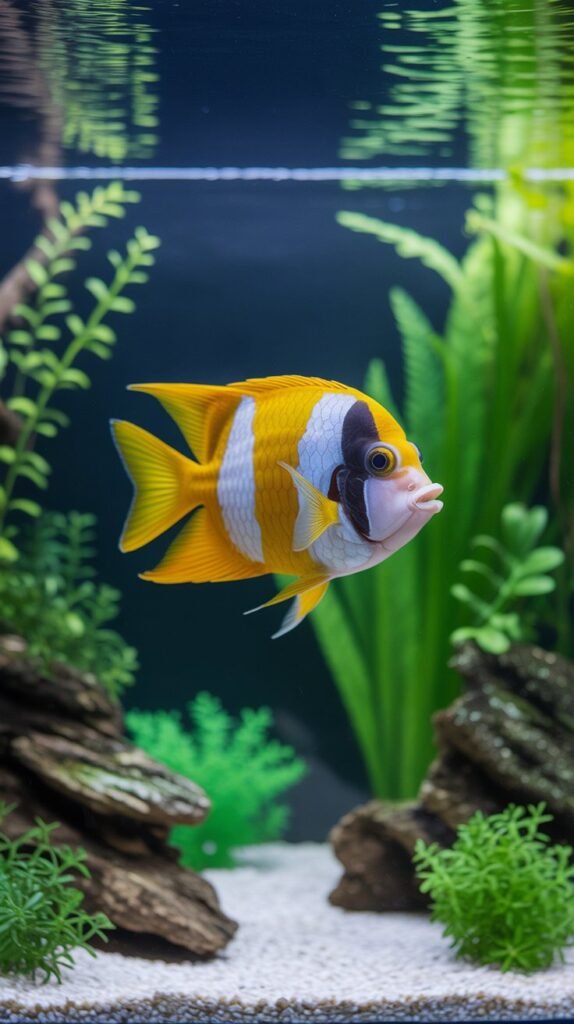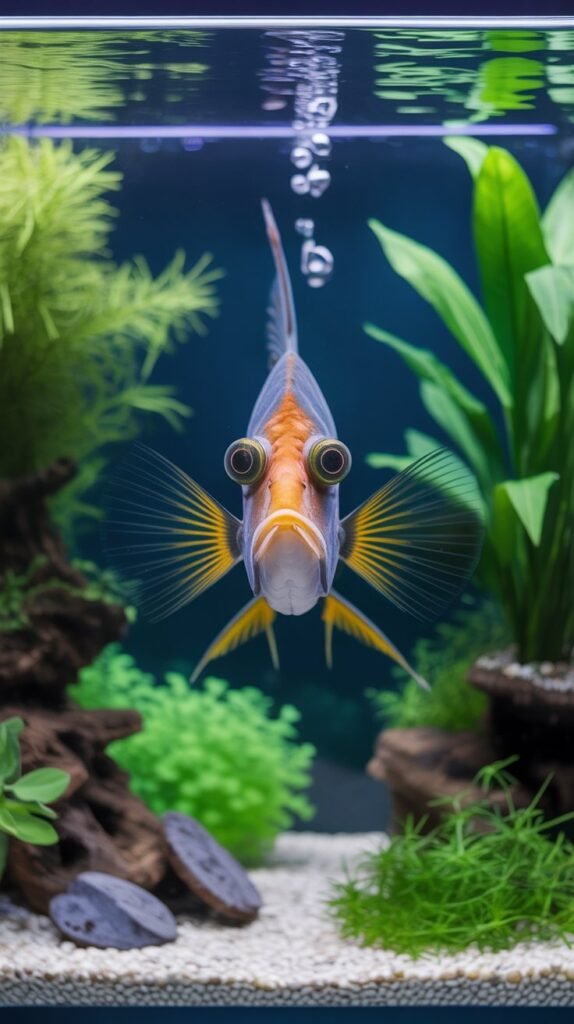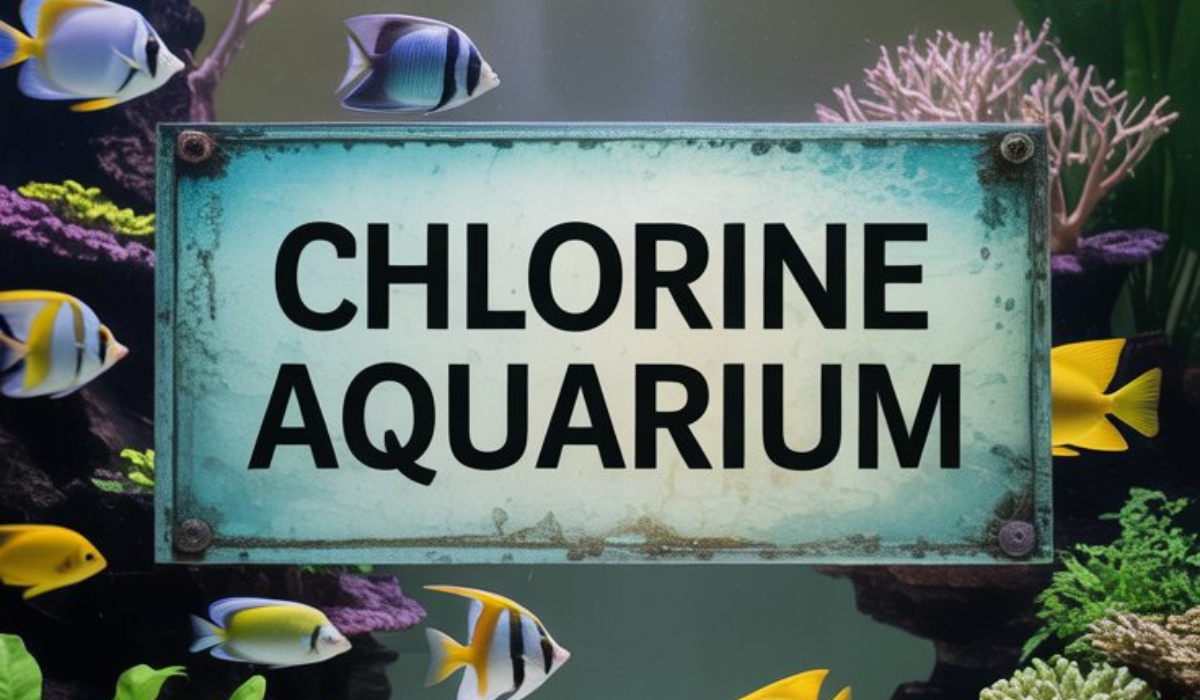Chlorine is a common chemical used to disinfect tap water and make it safe for human use. However, when it comes to aquariums, chlorine can be one of the most harmful substances for fish and aquatic life. Whether you’re a beginner or an experienced aquarist, understanding the effects of chlorine in an aquarium and learning how to manage it properly is crucial for maintaining a healthy aquatic environment.
In this detailed guide, we’ll explore everything you need to know about chlorine in aquariums, including its effects, how to remove it, testing methods, and prevention strategies. We’ll also provide practical tips for keeping your fish safe and your water crystal clear.
What Is Chlorine and Why Is It in Tap Water?
Chlorine is a strong oxidizing agent commonly added to municipal water supplies as a disinfectant. It effectively kills bacteria, viruses, and parasites that could otherwise make water unsafe for human consumption. Unfortunately, this same disinfecting property makes chlorine dangerous for fish, invertebrates, and beneficial bacteria that keep aquariums balanced.
There are two primary forms of chlorine found in tap water:
- Free Chlorine – The active form used to kill microorganisms.
- Chloramine – A combination of chlorine and ammonia, often used because it lasts longer in water.
Both forms are toxic to aquarium life, but chloramine is even more persistent and difficult to remove without proper treatment.
Why Chlorine Is Harmful in Aquariums

Even trace amounts of chlorine can cause severe harm to aquatic life. Fish and invertebrates have delicate gill membranes that allow oxygen exchange. Chlorine damages these membranes, leading to respiratory distress, tissue burns, and even death.
Here’s how chlorine affects aquarium environments:
1. Damage to Fish Gills and Skin
Chlorine burns the gill tissues, making it difficult for fish to breathe. Prolonged exposure can cause permanent damage or suffocation.
2. Destruction of Beneficial Bacteria
Chlorine kills nitrifying bacteria that convert ammonia into nitrites and nitrates in the nitrogen cycle. Without these bacteria, ammonia and nitrite levels spike, poisoning fish.
3. Harm to Aquatic Plants and Invertebrates
Aquatic plants may wither or develop brown spots when exposed to chlorine. Invertebrates like shrimp, snails, and crabs are especially sensitive and can die even at low chlorine concentrations.
4. Water Imbalance and Stress
When beneficial bacteria die off, your aquarium loses biological stability. Fish become stressed, more prone to disease, and the entire ecosystem suffers.
Symptoms of Chlorine Poisoning in Fish
Detecting chlorine exposure early can save your fish. Here are some common signs of chlorine poisoning:
- Gasping for air at the surface
- Rapid or labored breathing
- Red or inflamed gills
- Erratic swimming or lethargy
- Excessive mucus production
- Fish lying at the bottom of the tank
- Sudden unexplained deaths
If you notice these symptoms soon after a water change, chlorine contamination is likely the cause.
Sources of Chlorine in Aquariums
Even when aquarists are careful, chlorine can enter the aquarium in multiple ways. Common sources include:
- Untreated Tap Water – The most common source. Adding tap water directly introduces chlorine or chloramine.
- Improper Water Changes – Forgetting to use a water conditioner or not allowing water to dechlorinate before adding it.
- Cleaning Aquarium Equipment with Tap Water – Rinsing filter media or decorations in chlorinated water kills beneficial bacteria.
- Municipal Water Changes – Water treatment plants occasionally increase chlorine levels, affecting your aquarium unexpectedly.
- Using Certain Chemical Additives – Some cleaning agents or non-aquarium-safe chemicals may leach chlorine into the tank.
How to Test for Chlorine in Aquarium Water

Regular testing ensures that your aquarium water is safe. Here are a few reliable methods to test for chlorine:
1. Chlorine Test Strips
- Simple and affordable.
- Dip the strip into your aquarium water.
- Match the color change against the provided chart.
2. Liquid Test Kits
- More accurate than strips.
- Add a few drops of testing reagent to a water sample.
- Observe color changes that indicate chlorine concentration.
3. Digital Chlorine Testers
- Advanced and precise method.
- Measures both free chlorine and total chlorine.
- Ideal for serious aquarists or breeders.
Aim for 0 ppm (parts per million) chlorine before adding water to your aquarium.
How to Remove Chlorine from Aquarium Water
Removing chlorine before adding water to your aquarium is essential. There are several effective ways to do this:
1. Use a Water Conditioner (Dechlorinator)
Dechlorinators are specially formulated to neutralize chlorine and chloramine. Most also detoxify ammonia and heavy metals.
- Popular brands: Seachem Prime, API Tap Water Conditioner, Tetra AquaSafe.
- How to use: Add the recommended dosage to tap water before pouring it into your aquarium.
- Advantages: Fast, effective, and safe.
2. Let Water Sit (Aeration Method)
Allowing tap water to sit uncovered for 24–48 hours lets chlorine naturally dissipate.
- Note: This only works for free chlorine, not chloramine.
- Tip: Use an air pump or water circulation to speed up the process.
3. Boil the Water
Boiling for 15–20 minutes removes chlorine but is impractical for large tanks.
4. Use Activated Carbon Filters
Activated carbon filters absorb chlorine and other impurities.
- Use in: Aquarium filter systems or pre-filtration setups.
- Replace: Every 2–4 weeks for best results.
5. Use Reverse Osmosis (RO) Filtration
RO systems effectively remove chlorine, chloramine, heavy metals, and other contaminants.
- Best for: Sensitive fish species or planted aquariums.
- Consideration: RO water needs remineralization before use.
Chloramine: The Hidden Threat
Many municipalities now use chloramine instead of chlorine because it’s more stable and remains effective longer. However, it’s more challenging for aquarists to remove.
Chloramine is a combination of chlorine and ammonia. Standard dechlorination methods that release chlorine gas leave behind harmful ammonia. Therefore, you must use a water conditioner that detoxifies both chlorine and ammonia.
Pro tip: Always check your city’s water quality report or contact your local water supplier to confirm if they use chloramine.
Safe Water Change Practices

Water changes are essential for maintaining water quality, but they’re also the most common time chlorine enters the aquarium. Follow these best practices to ensure safe water changes:
- Always Treat Tap Water First
Never add untreated tap water directly to your tank. - Match Temperature and pH
Sudden changes in temperature or pH stress fish further. - Use a Bucket or Pre-Mixing Container
Mix and dechlorinate new water before adding it to the aquarium. - Test Before and After
Use chlorine test strips to ensure complete removal. - Regular Maintenance
Perform partial water changes (20–30%) weekly instead of large, infrequent ones.
Preventing Chlorine Contamination
Prevention is better than cure when it comes to aquarium chlorine problems. Here are some preventive tips:
1. Always Use a Dechlorinator
Even if you suspect your water supply has low chlorine, it’s best to use a water conditioner every time.
2. Avoid Washing Aquarium Media in Tap Water
Rinse filters, sponges, and decorations in old aquarium water to preserve beneficial bacteria.
3. Monitor Your Water Supply
Municipal water treatment levels change seasonally. Test tap water occasionally to stay informed.
4. Install a Whole-House Carbon Filter
If you maintain multiple tanks, consider a whole-house or under-sink filtration system to remove chlorine at the source.
5. Keep Emergency Supplies
Always have water conditioner and test kits available, especially before large water changes or during power outages.
Chlorine vs. Chloramine: Which Is Worse for Aquariums?
| Property | Chlorine | Chloramine |
|---|---|---|
| Composition | Chlorine gas dissolved in water | Chlorine + Ammonia compound |
| Stability | Evaporates quickly | Long-lasting |
| Toxicity to Fish | High | Very High |
| Removal Method | Can dissipate naturally | Needs chemical neutralization |
| Impact on Beneficial Bacteria | Severe | Severe, plus ammonia toxicity |
| Common in Municipal Water | Declining | Increasing |
Chloramine poses a greater risk to aquariums due to its stability and dual toxicity (chlorine + ammonia). Always use conditioners that specifically state “removes chlorine and chloramine.”
What Happens If You Don’t Remove Chlorine?
Failing to remove chlorine before adding water to your tank can have catastrophic effects. Within minutes, fish may start gasping or floating near the surface. Beneficial bacteria die off, leading to spikes in ammonia and nitrites. Even if fish survive the initial exposure, they become stressed and susceptible to diseases like fin rot, ich, or fungal infections.
In short, chlorine-free water is non-negotiable for any healthy aquarium setup.
Chlorine in Different Aquarium Types
1. Freshwater Aquariums
Most common household aquariums use freshwater, which typically comes from chlorinated tap water. Always use dechlorinators for water changes.
2. Saltwater (Marine) Aquariums
Marine organisms are even more sensitive to chlorine. Use RO/DI (Reverse Osmosis/Deionization) water to avoid contamination entirely.
3. Planted Aquariums
Chlorine harms beneficial bacteria and plant health. It can damage leaf tissues and stunt growth. Using dechlorinated or RO water promotes lush plant growth.
4. Shrimp or Invertebrate Tanks
Invertebrates like shrimp, snails, and crabs are extremely vulnerable to even trace amounts of chlorine. Use only fully treated water and test regularly.
Long-Term Impact of Chlorine on Aquarium Ecosystems
Even low levels of chlorine exposure over time can cause chronic stress, weak immune systems, and reproductive issues in fish. Beneficial bacteria colonies may never fully recover, leading to unstable nitrogen cycles and recurring ammonia spikes. This results in cloudy water, algae overgrowth, and sick fish.
Maintaining chlorine-free water ensures:
- Stable biological filtration
- Healthy, active fish
- Vibrant plants
- Clear, balanced water
Best Products to Remove Chlorine and Chloramine
Here are some top-rated water conditioners trusted by aquarists worldwide:
- Seachem Prime – Removes chlorine, chloramine, and detoxifies ammonia and nitrite.
- API Tap Water Conditioner – Concentrated and cost-effective for large tanks.
- Tetra AquaSafe Plus – Adds slime coat protectant for fish health.
- Aqueon Water Conditioner – Removes chlorine and neutralizes heavy metals.
- Fluval Water Conditioner – Designed for freshwater and marine tanks.
Always follow manufacturer instructions and avoid overdosing.
Emergency Steps: What to Do If You Added Chlorinated Water
Accidents happen! If you’ve accidentally added untreated tap water to your aquarium, act fast:
- Immediately Add a Water Conditioner – Use a double dose if necessary (safe for emergencies).
- Increase Aeration – Boost oxygen with air stones or powerheads.
- Perform Partial Water Changes – Replace 30–50% of water with dechlorinated water.
- Monitor Fish Closely – Watch for signs of stress or poisoning.
- Test Water Parameters – Check ammonia, nitrite, and chlorine levels.
Quick action can save your fish from chlorine shock.
Conclusion
Chlorine may keep our drinking water safe, but it’s deadly for aquariums. Even minimal exposure can harm fish, plants, and beneficial bacteria, destabilizing your entire aquatic ecosystem. Thankfully, removing chlorine and chloramine is easy and inexpensive with the right water treatment methods.
By using dechlorinators, testing your water regularly, and following safe maintenance practices, you can protect your fish and create a thriving, chlorine-free aquarium. Remember — prevention is always better than cure.
FAQs About Chlorine in Aquariums
1. How much chlorine is safe for fish?
No amount of chlorine is safe for fish. Even levels as low as 0.02 ppm can cause damage or death.
2. How long should tap water sit before using it in an aquarium?
Letting water sit for 24–48 hours can remove chlorine, but not chloramine. Always use a dechlorinator for guaranteed safety.
3. Can boiling water remove chlorine?
Yes, boiling removes chlorine but not chloramine. It’s impractical for large tanks but useful in emergencies.
4. Do aquarium filters remove chlorine?
Standard filters don’t remove chlorine unless they contain activated carbon. Check your filter specifications.
5. Is bottled water safe for aquariums?
Some bottled waters contain chlorine or have unbalanced minerals. Always test and condition it before use.
6. What happens if I accidentally add untreated tap water?
Add a water conditioner immediately, increase aeration, and monitor fish for signs of stress or poisoning.
7. Does chlorine affect aquarium plants?
Yes. Chlorine can damage plant leaves, inhibit photosynthesis, and kill beneficial microorganisms in the substrate.
8. How can I know if my tap water has chloramine?
Contact your local water supplier or check their website for water quality reports.
9. Can I use vitamin C to remove chlorine?
Yes, vitamin C (ascorbic acid) can neutralize chlorine, but commercial dechlorinators are safer and more reliable.
10. Should I dechlorinate water even if using well water?
Yes, some wells are treated with chlorine. Always test first to be sure.

